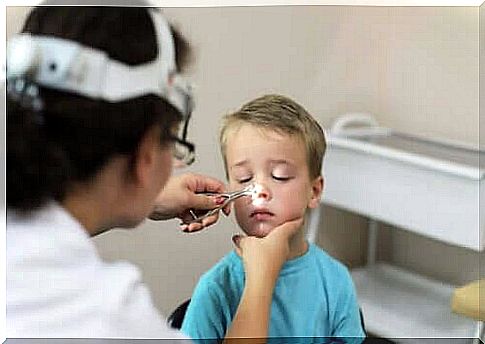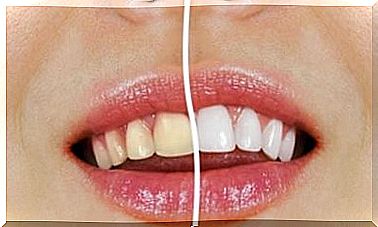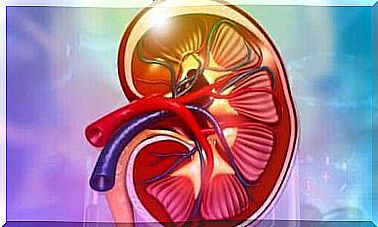Adenoiditis In Infants
Adenoiditis is a common disease in newborns and children. It occurs when the tissue is inflamed and usually disappears in adulthood. Bacterial infection is the most common cause of this condition.

The adenoiditis is a disease (of the lymphoid tissue in the vicinity of the nostrils of the mass) is characterized in terms of the size of the nasopharynx of babies by inflammation in the size of the adenoids. Among other things, it causes nasal congestion. The main cause, according to pediatric sources, is an infectious episode.
Adenoiditis has characteristic symptoms and is relatively common in infants. Even so, it is important to know when to see a doctor for possible treatment if you suspect this condition. Read on below to learn more about it.
Who is prone to adenoiditis?
Before we dive into the subject, let’s first talk about the population that is most likely to suffer from this disease. Various medical examinations provide the following data :
- The spread of adenoiditis in infants is difficult to measure because it is mostly associated with other conditions such as rhinosinusitis.
- According to scientific studies, the highest morbidity (probability of contracting the disease) is between one and nine years.
- Adenoid tissue begins to atrophy around the age of six and seven and continues to decline during puberty. Because of this, the disease is characteristic of infants and children.
As you can see, this is a condition that is influenced by a person’s age. Adenoiditis is not a major cause of nasal congestion in adults.

Features of the disease
As we mentioned earlier, this condition manifests itself as swelling of the adenoid tissue, an area just behind the nose that is part of the lymphatic system. This structure responds to infection by trapping germs and bacteria so they don’t get into the upper respiratory tract.
Adenoids are functional in infants and children, but according to the sources above, they reach their maximum growth by the age of seven. From that point on, they begin to decrease until they are almost gone by the time a child reaches adulthood. This is because we develop new immune mechanisms as we age.
However, we need to point out the difference between acute and chronic adenoiditis – although this concept does not appear to be standardized by all bibliographic sources. The adenoid tissue can become temporarily inflamed during an anticipated infectious episode. However, if the adenoids become infected, the clinical picture can become chronic.
The US National Library of Medicine reports that infections are the leading cause of acute adenoiditis. However, allergic processes or irritation caused by acidification of the stomach can also play a role. The bacteria that are most commonly associated with this condition are:
- Haemophilus influenza
- Streptococcus pneumoniae
- Streptococcus pyogenes
- Staphylococcus aureus
Finally, it should be noted that repeated adenoiditis leads to adenoidal hypertrophy. In this case, surgical removal of the tissue may be necessary as it will not shrink in size after infection.
Symptoms of the disease
Pediatric portals such as Kidshealth list the symptoms of this disease in both infants and children. Some of the most common symptoms are as follows :
- A dry mouth and bad breath
- Chapped lips
- Nasal discharge
- Ear problems
- Loud breathing
- Recurring nasal or sinus infections
All of these symptoms are due to a newborn’s inability to breathe properly. The swollen tissue allows air to move into the upper respiratory tract, so the baby begins to breathe through their mouth.
Treatment of adenoiditis in infants
The key to treating infant adenoiditis is to wait and see. There is no point in giving antibiotics to a newborn with an allergic reaction. Also note that a self-made diagnosis is also out of the question in this case. Instead, you should turn to a pediatrician who can take several steps:
- Virus infections usually do not need treatment. In fact, this upper respiratory disease usually goes away within 5 to 7 days. At least this is evident from some scientific sources.
- Some bacterial infections require antibiotics. For example, amoxicillin is one of the most commonly used drugs and improves within 48 to 72 hours.
- Nasal steroid sprays or antihistamines are the way to go if your baby is suspected of having an allergic reaction.
- Changing the infant’s diet and consulting a child nutritionist should be sufficient to relieve symptoms of heartburn and acid reflux.
If the patient does not respond to treatment and continues to have breathing problems that affect their quality of life, an adenoidectomy (removal of the adenoids) may be required. This surgery is not a risk for most infants.

Adenoiditis in babies and the role of the pediatrician
Adenoiditis is a common disease that is often associated with other pathological processes of the upper respiratory tract. Therefore, contact your pediatrician if your baby has difficulty breathing, bad breath, dry mouth, or other persistent symptoms, and cries a lot.
Also, note that episodes caused by bacterial infections can also manifest with malaise and fever. For this reason, if you experience any of these symptoms in your baby, you should see a doctor.









